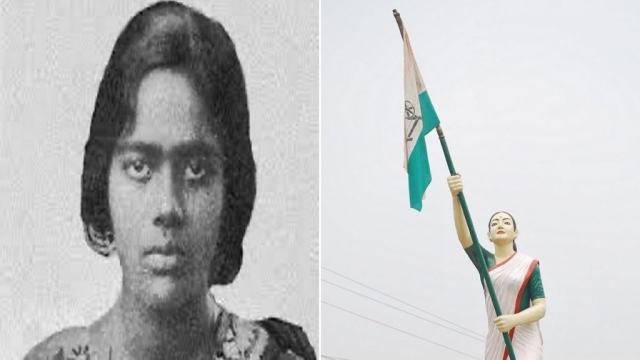Matangini Hazra and Kanaklata Barua
The President of India paid tribute to the known and unsung heroes of India’s freedom struggle. Among them are Matangini Hazra and Kanaklata Barua, remarkable women who made indelible contributions to the movement. Matangini Hazra, a brave soul from West Bengal, led protests, courted arrests, and ultimately laid down her life in 1942, fighting British oppression. Kanaklata Barua, an iconic figure from Assam, unfurled the Tricolour amidst adversity in 1942 and became one of the youngest martyrs. Their sacrifices epitomize the spirit of the freedom movement. This article sheds light on their extraordinary lives, their resilience, and the enduring impact they’ve left on the pages of history.
Who were Matangini Hazra and Kanaklata Barua, and what roles did they play in India’s freedom struggle?
Matangini Hazra was a fearless freedom fighter from West Bengal who participated in various movements, including the Quit India Movement. Kanaklata Barua, on the other hand, was a young revolutionary from Assam who led a procession to hoist the Tricolour during the Quit India Movement. Both women exhibited remarkable courage and dedication to the cause of Indian independence.
How did Matangini Hazra’s early life shape her journey as a freedom fighter?
Born in a poor family and married at a young age, Matangini Hazra faced challenges that strengthened her resolve. After her husband’s death, she devoted herself to social causes and eventually became an active participant in the freedom movement, aligning with Mahatma Gandhi’s principles.
What significant incidents mark Matangini Hazra’s involvement in the freedom struggle?
Matangini Hazra’s active role in the Civil Disobedience Movement, participation in the Salt March, and her instrumental role in the Quit India Movement highlight her commitment. Her ultimate sacrifice while leading a procession to seize a police station demonstrated her unyielding spirit.
How did Matangini Hazra and Kanaklata Barua leave a lasting impact on India’s history?
Matangini Hazra’s sacrifice earned her the status of a martyr and led to the establishment of a local government in Medinipur. Streets, schools, and neighborhoods are named after her. Kanaklata Barua’s legacy lives on through the Coast Guard vessel named in her honor, symbolizing her enduring contribution to Assam’s history.
What do Matangini Hazra and Kanaklata Barua represent in the context of women’s participation in the freedom movement?
Both women exemplify the significant roles women played in the freedom movement. Their courage, leadership, and sacrifices shattered stereotypes, inspiring more women to join the cause. Their stories stand as a testament to the vital contributions of women in India’s struggle for independence.
Month: Current Affairs - August, 2023
Category: India Nation & States Current Affairs








